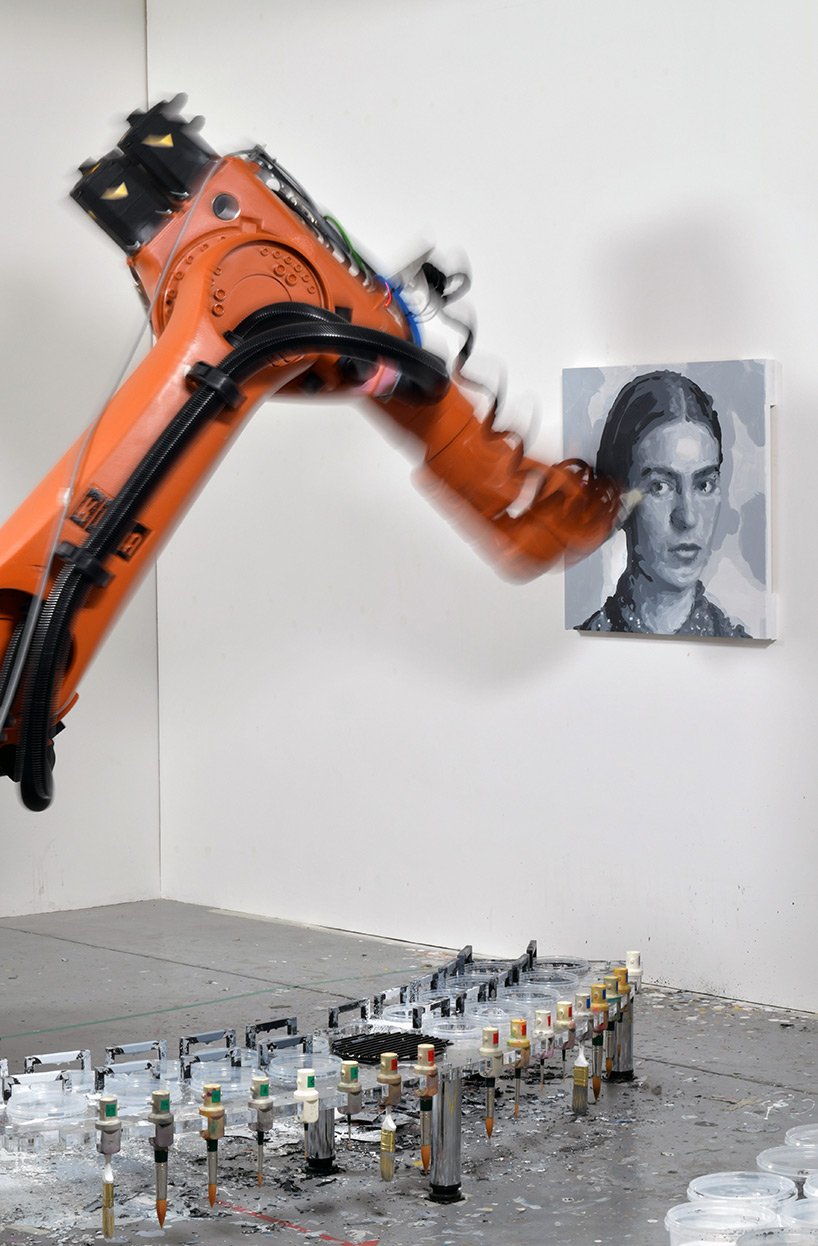Community, Leadership, Experimentation, Diversity, & Education
Pittsburgh Arts, Regional Theatre, New Work, Producing, Copyright, Labor Unions,
New Products, Coping Skills, J-O-Bs...
Theatre industry news, University & School of Drama Announcements, plus occasional course support for
Carnegie Mellon School of Drama Faculty, Staff, Students, and Alumni.
CMU School of Drama
Monday, January 27, 2020
these robot portraits are painted unguided by the human mind or eye
www.designboom.com: husband and wife artistic duo rob and nick carter take on digital age technologies with one of their most technically pioneering projects to date. presented at london-based gallery ben brown fine arts from now through april 17, 2020, ‘dark factory portraits’ poses the intriguing questions: could a machine become a painter? could it convey human personality?
Subscribe to:
Post Comments (Atom)

4 comments:
This is quite cool! What an interesting conversion of art and technology. I believe people are using the term S.T.E.A.M. for this kind of thing now, as an extension of S.T.E.M. that includes the arts (thrilling that the modern world recognizes the value of art in technology finally). I like the style that the robot paints in. It kind of reminds me of Microsoft Paint the way some of the colors show up as filled in shapes. I wonder how they got the robot to understand how to actually start painting! Also, isn’t it so neat that the machine is set up like a CNC with its tool (or in this case, brush) change system? How does it wash the brushes and know when they’re clean? How does it know where to paint if it can’t see the surface?? I wonder if machines like this will ever be modified to recreate famous works of art.
I was really impressed by the accuracy with which the robots were able to paint realistic people using a range of colors with actual visible strokes. As someone who has difficulty drawing realistic people I felt frustrated that even robots could do this task while I couldn’t. Except, this is a robot who was told exactly what to do and exists for the purpose of painting. The last photo that the article shares with us is a portrait of artist Robert Blake. In the description of the photo we get to see the time it took for the robot to paint it (down to the second), and the exact number of strokes it used to complete it. This made me think about how methodical the action of painting was for the robot. This also brings up the question of what makes an artist, and whether or not these paintings should be considered “real art.” Overall, I think these machines are super cool but it brought up a lot of deep questions about what art is.
It's really interesting that reading this article brought up the memory of a conversation I had a couple of years ago at a leadership conference I attended. The group was discussing what our personal opinions were of how "robots" and AI were entering the workforce and essentially "taking people's jobs." I remember having a conversation with a man where he said that at some point in time we will have AI machines doing office work, picking up trash, and even making art. I, as well as a few other "creative minds" in the group, didn't exactly know how to feel about. Yes, it is amazing to see how technology is changing and evolving, but at the same time can a machine truly be creative? Yes, the robotic arm described in this article is able to paint quite beautiful portraits of people, but at the same time, these portraits are being painted from pre-existing photos of people, meaning a person had to take or paint a photo for this robot to recreate. This still requires the creative and imaginative mind of a person in order to make the robotic arm worthwhile.
Robots are more and more complex and skilled every single day. They are replacing jobs and changing what it means to manufacture. Manufacturing jobs are becoming robot maintenance jobs. Having a robot paint looks at the robot in a different way. They will not replace artists anytime soon but they could really change the reproduction industry. What if instead of prints of a famous photo you instead had an exact painted replica. I think robots could be very helpful in this sense. I also wonder what its skill is at mixing paints. Like, imagine if you had like a coke soda machine (the one where you pick your flavor add-in) and it could scan a paint sample and you could instantly fill up a bucket of paint. You wouldn’t have to worry about running out because you could always fill it back up. It would also save wasted paint because you could easily get a bit less and come back for more.
Post a Comment